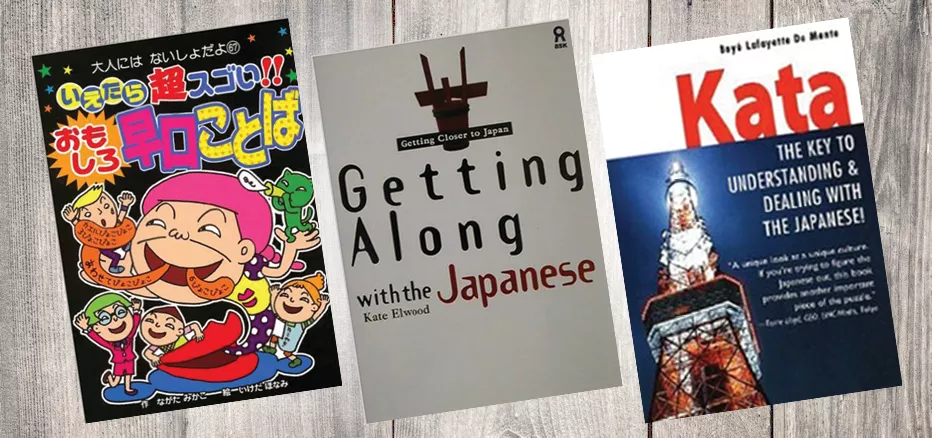Selected book reviews by students at JLCC
早口ことば (Tongue-twisters) / Getting Along with the Japanese / Kata – The Key to Understanding and Dealing with the Japanese

(JLCC is OMF’s Japanese Language and Culture Centre.)
早口ことば (Tongue-twisters)
by Nagata Mikako
This book contains some traditional or well-known Japanese tongue twisters, and is divided into five levels so you can challenge yourself. It is easy and fun to read, and helps train the tongue in speaking Japanese. It can also help you understand and remember a little bit more Japanese. The book also states that speaking hayaguchi helps train your right brain, your facial muscles and burns fat!
I read this book with my son and found that it was easy and fun for little kids to remember and say the phrases. Primary school textbooks in Japan also use rhymes to help children learn. In Hong Kong, we have some rhymes with gospel content, so if we could develop some tongue twisters with gospel content, it might be a good way for kids to remember the gospel.
Review by Karen Kwok
Getting Along with the Japanese
by Kate Elwood
Moving cross-culturally can be unsettling because often we are not familiar with the language, culture and worldview of the country to which we are moving. This book introduces readers to the key values of Japanese people and how these values shape how they think and behave in a variety of situations, and provides advice on how to respond appropriately in those situations. The topics covered in this book range from everyday activities such as non-verbal communication, eating out or visiting someone’s home, to formal rituals and ceremonies, such as etiquette regarding weddings and funerals. This book is easy to understand, aided by simple illustrations and useful vocabulary relevant to the topic being described.
Review by Iryaku Hyou
Kata – The Key to Understanding and Dealing with the Japanese
by Boye Lafayette de Mente
The author suggests that the secret behind Japan’s economic success – despite being resource-poor and going through World War 2 – lies in its shikata, its “way of doing things.” These kata emphasize form and order in virtually all aspects of Japanese life – from day to day living, to art, poetry, suicide, tea ceremony, in the workplace, government, foreign policies, etc. Essentially, says the author, the Japanese have the culture of kata so deeply ingrained in them – for the sake of harmony and group identity – that they cannot operate without them, which can place tremendous pressure on Japanese to conform.
However, although the author tries to be objective he tends to see Japanese culture negatively. The book also fails to go deeper into the worldview of the Japanese. But this book makes good, light reading for someone who wishes to have some understanding of why the Japanese behave the way they do.
